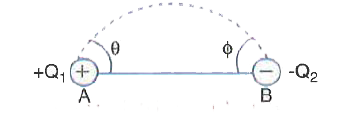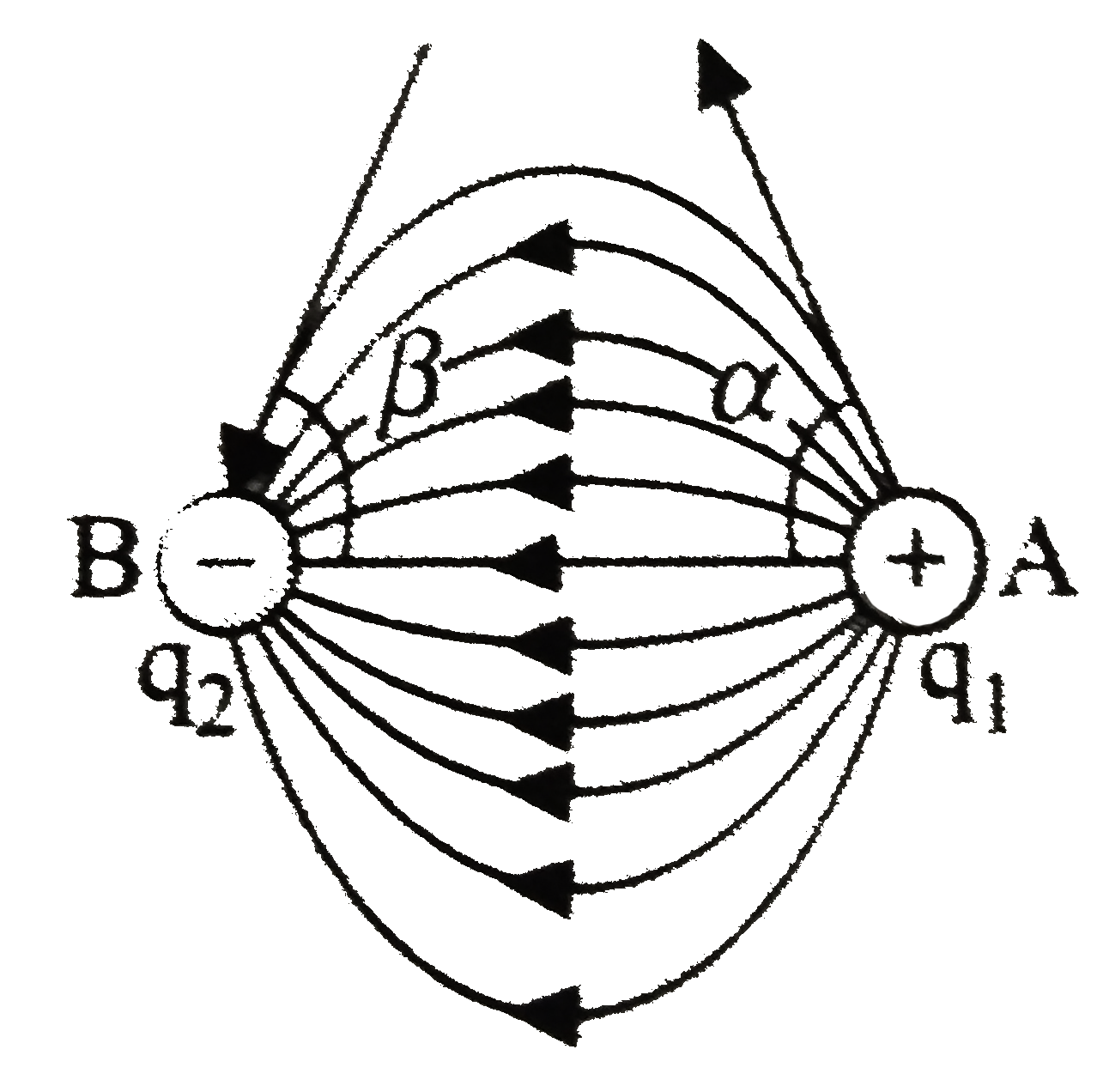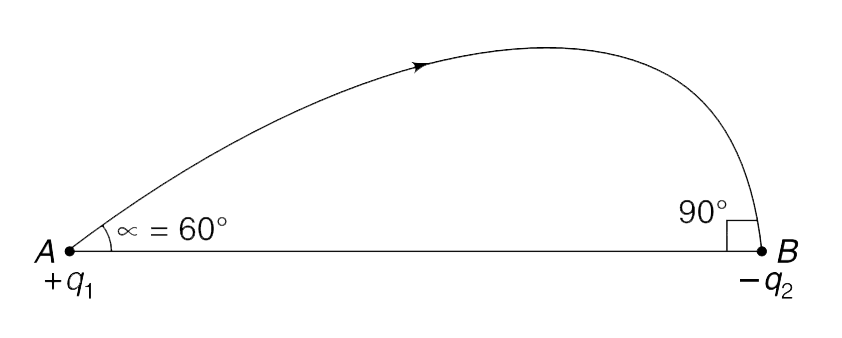Two point charges and are placed at A and B respectively . A line of force emanates from at an angle with line joining A and B . At what angle will it terminate at B ?

We know that number of emerging lines of force f is proportional to magnitude of the change . The field lines emanating from Q1 are spread out equally in all direction . The number of field lines or flux through cone of half angle is
Similary the number of lines of force terminating on at an angle is .
The total lines of force emanating from is equal to the total lines of froce terminating on
or
Related Playlists
- BOOK - AAKASH SERIESCHAPTER - GAUSS.S LAW EXERCISE - EXERCISE (LONG ANSWER QUESTIONS)1videos
GAUSS.S LAW
- BOOK - AAKASH SERIESCHAPTER - GAUSS.S LAW EXERCISE - EXERCISE (VERY SHORT ANSWER QUESTIONS)10videos
GAUSS.S LAW
- BOOK - AAKASH SERIESCHAPTER - FRICTION EXERCISE - ADDITIONAL PRACTICE EXERCISE PRACTICE SHEET (ADVANCED) (MORE THAN ONE CORRECT ANSWER TYPE QUESTIONS)1videos
FRICTION
- BOOK - AAKASH SERIESCHAPTER - GRAVITATIONEXERCISE - ADDITIONAL PRACTICE EXERCISE (LEVEL-II) PRACTICE SHEET (ADVANCED)Integer Type Questions6videos
GRAVITATION
Knowledge Check
- Question 1 - Select One
Two point charges +4q and +q are placed 30cm apart. At what point on the line joining them is the electric field zero
A15 cm from charge qB20 cm from charge 4 qC7.5 cm from charge qD5cm from charge q - Question 1 - Select One
Two points charge q1 and q2(=q1/2) are placed at points A(0,1) and B(1,0) as shown in the figure.The electric field vector at point P(1,1) makes an angle q with the x-axis ,then the angle q is
 Atan−1(12)Btan−1(14)Ctan−1(1)Dtan−1(0)
Atan−1(12)Btan−1(14)Ctan−1(1)Dtan−1(0)
Similar Questions
Two charges+q1 and −q2 are placed at A and B respectively. A line of force emanates from q1 at an angle α with the line AB. At what angle will it terminate at −q2 ?
 View Solution
View SolutionTwo charges+q1 and −q2 are placed at A and B respectively. A line of force emanates from q1 at an angle α with the line AB. At what angle will it terminate at −q2 ?
 View Solution
View SolutionTwo point charges +q1 and −q2 are placed at A and B respectvely. An electric line of force emerges from q1 making an angle α=60∘ with line AB and terminates as −q2 making an angle of 90∘ with line AB.
(a). Find ∣∣∣q1q2∣∣∣ ltbr> (b). Find the maximum value of angle α at which a line emitted from q1 terminates on charge q2.
 View Solution
View SolutionTwo point charges Q and q are placed at distance r and r2 respectively alogn a straigt line from a third charge 4q. If q is in equilibrium determine Qq.
View SolutionTwo point charges+ q and-q are placed at distanced apart. What are the points at which the resultant field is parallel to the line joining the two charges ?
View SolutionTwo point charges +4q and +q are placed 30cm apart. At what point on the line joining them is the electric field zero
View SolutionTwo point charges +Q and -Q are separated by a certain distance. The resultant electric field is parallel to the line joining the charges at the points
View Solution(a) An electric dipole of dipole moment →p is placed in a uniform electric field →E at an angle θ with it. Derive the expression for torque (→τ) acting on it. Find the orientation of the dipole relative to the electric field for which torque on it is (i) maximum, and (ii) half of maximum.
(b) Two point charges q1=+1μC and q2=+4μC are placed 2 m apart in air. At what distance from q1 along the line joining the two charges, will the net electric field be zero ?View Solution

